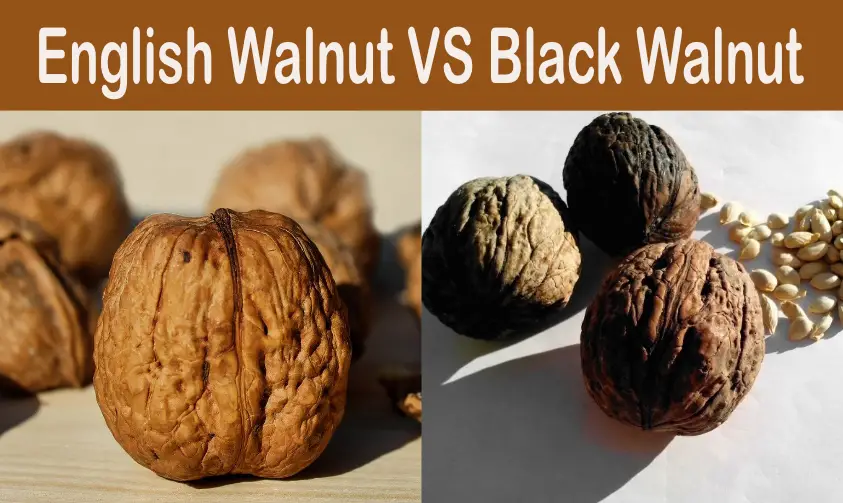The walnuts species we are most often eating are the English walnuts or the Persian walnuts.
The English walnut is widely grown for its high-quality edible seeds. These seeds are commercially sold as walnuts.
English walnuts are grown in orchards in the USA, whereas almost all Black walnuts have wild origins.
However, the distinctive, bold, and rich flavor makes the Black walnuts stand out.
You can eat the raw walnuts as they come, or you can cook and toast them to benefit the most from their flavor.
For that matter, you need to place the walnuts on the baking sheet in the form of a single layer.
Do bake them for about ten to twelve minutes on medium heat. When the seeds turn golden, your delicious baked walnuts are ready.

Differences in nutrition
We can eat walnuts for their taste and flavor, but in the end, the nutritional value is all that matters. So, in the following, we are going to look at the nutritional benefits of the English and Black walnuts.
Although English walnuts are more common than Black walnuts, the nutritional value of Black walnuts is more than the English walnuts.
Black walnuts have high levels of health-promoting elements like polyunsaturated fatty acids, and antioxidants.
Furthermore, Black walnuts are rich in nutrients like Vitamins B1, B2, B3, minerals like copper, and manganese.
On the other hand, English walnuts are rich in minerals like zinc, potassium, magnesium.
Difference in Flavor
The English walnut comes with a more delightful taste. So, the English walnut is typically used in roasting, making ice-creams, baking, and cooking due to its unique taste and flavor.
On the other hand, the Black walnut has an earthier and stronger flavor. However, you will rarely find any Black walnuts in your local supermarket because of the vast customer demand for the English walnuts species.
Anyhow, some food industries, for instance, Hammons, in the USA, produce and deliver the Black walnuts to their customers directly.
While the English walnuts go straight in the customers’ plates, the industrial buyers mostly use the Black walnuts to make extracts and flavors.
Also, the Black walnuts have extra protein and fat compared to the English walnuts.
English walnut tree vs. a Black walnut tree
You can easily distinguish English walnuts from Black walnuts due to their appearance.
English walnut trees contain smooth, olive-brown bark at a young age. With advancing age, the bark develops broad fissures.
The leaves of English walnut are pinnate, like all other walnut species. However, the size of English walnut leaves is smaller.
The whole fruit is edible, having a rich and bold flavor.
The black walnut tree contains a darkly colored bark. Also, the deep furrows in the bark make the Black walnut tree trunk appear rough. The nuts grow in the round green husk of the tree. Also, pinnate leaves make up the foliage of the Black walnut tree.
English walnut vs black walnut wood
You can easily differentiate English walnut wood from Black walnut wood by looking at the color of their heartwood.
The heartwood of the English walnuts is olive-brown. The heartwood of the Black walnuts is typically reddish-brown or dark brown.
The outer layer is called sapwood, and it is lighter in color than the inner portion of the tree’s trunk. Also, it is soft to touch, smooth and does not contain any pores for wood moisture to escape into.
Also black walnut wood is harder than English walnut wood. So Black walnut wood makes it an expensive material for furniture production, musical instruments, tool handles, etc.
Additionally, it is used in shipbuilding, golf club heads, and the manufacture of toys because it is durable and flexible at the same time.
The Black walnut wood is also used as a wood preservative, as it can withstand higher levels of dryness and relative humidity than English walnut wood.
English walnut vs black walnut leaves
The leaves of Black walnut trees are dark green and the petioles are purple.
But the twigs and stems of English walnut trees are lighter colored than Black walnut, and they don’t have any purple tones in them.


